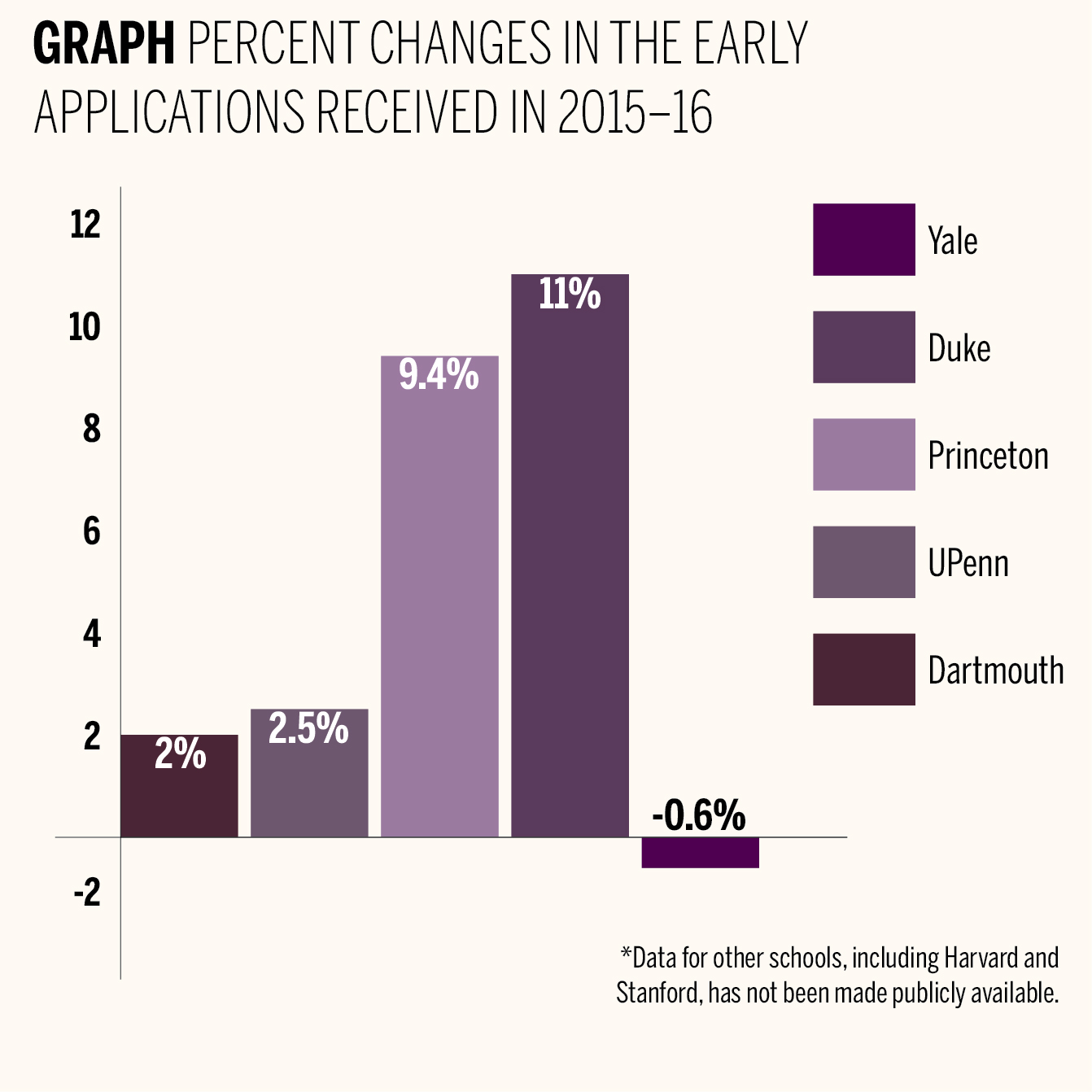
Though the number of early action applications the University received for the class of 2020 differed little from last year’s figures — dropping by just 0.6 percent — many of Yale’s peer institutions have posted increases in the number of early applications they received.
Dartmouth and the University of Pennsylvania’s early applicant pools increased this year by 2 and 2.5 percent, respectively, with Penn posting an all-time high in the number of students applying through the school’s early decision program. Princeton and Duke saw jumps of 9.4 percent and 11 percent, to 4,164 and 3,455 total early action and early decision applications, respectively, though those numbers are still lower than Yale’s early pool of 4,662 applications this year. Dean of Undergraduate Admissions Jeremiah Quinlan said he was not concerned about Yale’s drop, noting that he was satisfied with the number of early applications received by Yale and that it is more important to look at long-term trends in data rather than year-to-year variations.
“My goal in the Yale admissions office is not to increase the number of applications, it’s to get the right type of applications,” Quinlan said. “I don’t want more than 30,000 applications. I want the right 30,000 applicants for Yale. At this point I’m satisfied with the strength of the early action applicant pool and I look forward to releasing decisions on Dec. 15.”
Quinlan said that rather than sending admissions materials to students who have low chances of admittance, the Office of Undergraduate Admissions carefully focuses its outreach efforts. Last month, the Admissions Office reported an increase in the number of early applicants from underrepresented groups, with Director of Outreach and Recruitment Mark Dunn ’07 stating that the changes may be due to continued outreach efforts geared toward low-income and minority applicants.
Brian Taylor, director of The Ivy Coach, a New York-based college consulting firm, said the lack of growth in Yale’s early application pool may be due to these efforts, which would come at the expense of garnering more applications overall. As resources are limited, he said, it may be difficult for colleges to focus their outreach on specific groups while also increasing their applicant pools. Still, he said, he would applaud Yale if that were the reason for the decrease in applications.
“If that’s the case, kudos to Yale,” Taylor said.
Michael Goran, director of the California-based private education consulting firm IvySelect, said incremental fluctuations of a few percentage points in application numbers, whether up or down, are not significant. As for Princeton’s increase, he said it might be due to an expansion of its admissions office’s outreach efforts to drive up overall application numbers.
Parke Muth, former associate dean of admissions at the University of Virginia and an independent college counselor, said the fact that Penn and Duke offer early decision application programs, which traditionally accept students at a much higher rate than early action programs, possibly contributed to their rising application numbers. While applicants admitted in the early action pool are not required to attend the school to which they applied, those admitted through early decision are, which provides an incentive for schools to admit more students during that period, since the overall yield for admitted students will be higher.
“It’s not a surprise that more people keep applying early [to early decision schools],” Muth said. “The acceptance rate varies dramatically between early decision and regular decision.”
Muth suggested that the decrease in Yale’s early applications may be due to students with lower chances of acceptance choosing to apply elsewhere. Muth noted that historically, Yale has not lowered its standards for its early applicants in terms of credentials required for admission, while other schools might.
For the class of 2019, Yale’s early acceptance rate was 16 percent, while the acceptance rate for regular decision applicants was 4.7 percent. Penn accepted 23.9 percent of early applicants to fill 54.4 percent of its class during early admission, and accepted 7.9 percent of applicants for regular decision.







